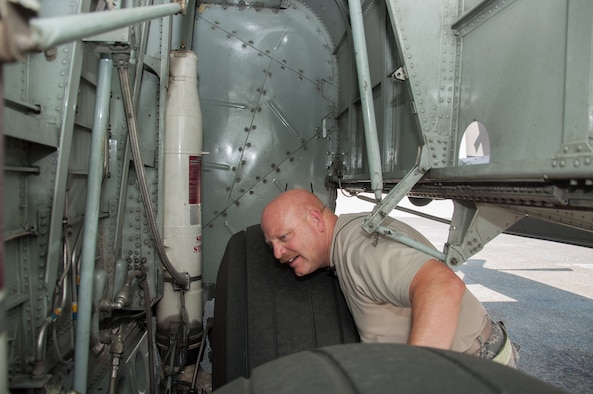By Sgt. Connor Hancock , 1st Marine Corps District
BOWMAN, SC, UNITED STATES -- BOWMAN, S.C. — About a month
ago, Staff Sgt. Dustin Gill’s life changed forever. His day started off as
planned; him and his wife Cynthia packed their luggage and hit the road for
their honeymoon cruise. It was a predictable drive on Interstate 26, until the
couple hit dead stop traffic.
“I saw a motorcycle laid out and a body on the highway,”
said Gill. “I ran across a couple of lanes of traffic to check the guy out.”
The man laid on the side of the road bleeding and still. His
left leg was completely severed from the knee down. Gill immediately applied
pressure to the man’s leg and asked a fellow bystander, who was also at the
scene for his belt. Gill then directed Cynthia to grab a tire iron to make an
improvised tourniquet.
“I used the bar to twist the belt as tight as I could to
stop the bleeding,” Gill said. “I had my wife grab a blanket out of the car so
I could cover him up- so he didn’t see his amputated leg and go into shock.”
Gill directed onlookers to call 911, get him a pen and
notepad, and clear traffic to allow for helicopter landing.
“We kept him talking as much as possible to ensure he
maintained consciousness and to give as much information as we could about him
to the EMTs,” said Gill.
When EMTs arrived, Gill assisted them in applying a proper
tourniquet, passed along the man’s information, and stepped away as the man was
flown out by helicopter.
The man Gill saved is George Wingert, an 80-year-old Florida
resident and Vietnam War Army veteran.
“If Dustin wasn’t there for me, I wouldn’t be here now,”
Wingert said. “He was meant to be there. He’s a part of my life now.”
Gill learned to provide medical aid during Marine Corps
training he received leading up to his two deployments in Afghanistan. Gill served
as a machine gunner in a security platoon in 8th Engineer Support Battalion,
2nd Marine Logistics Group, during his second tour in Afghanistan.
“I’m grateful for the training because it obviously had an
impact,” said Gill. “Going down to my honeymoon, I didn’t think anything like
that was going to happen, but I’m glad I knew how to react.”
Since the incident, Dustin and Cynthia Gill have been
keeping close contact with George.
“Dustin and his wife came down Saturday, and they spent
several hours here,” Wingert said. “They’re phenomenal.”
Daniel Wingert, George’s Grandson, said Dustin and Cynthia
made the difference in saving George’s life. “I want to commend him for the job
well done,” said Daniel. “I’ve always had great respect for the Marines and the
job that they do. It just shows how people can come together and be there when
needed to help.”
According to Gill, any Marine with the same training would
have helped in the situation. “It was an unfortunate circumstance that day, but
I’m glad I was there when I was. I wish George a speedy recovery.”









